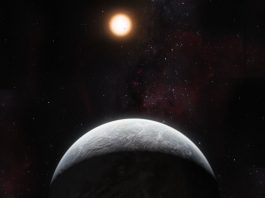A new study has indicated that current exoplanet surveying strategies may be missing nearly 50% of the Earth-size planets situated around other stars.
The research, conducted by astronomers at the NASA Ames Research Center, utilised the international Gemini Observatory and the WIYN 3.5-metre Telescope at the Kitt Peak National Observatory, revealing that many Earth-sized planets may still be undiscovered due to the glare emitted by their parent stars. This is particularly exciting as around half of all stars in the Universe are located in binary systems, indicating a substantial number of potential Earth-sized planets remain unidentified, some of which may even host life.
The quest for Earth-sized planets
The astronomers discovered that a staggering amount of the stars distinguished by NASA’s TESS exoplanet-hunting mission were, in fact, binary stars – two stars paired together – in which a planet will orbit one of the stars in the pair. By analysing these binary systems, the researchers concluded that transit searches like TESS – which examine changes in light from a star when a planet passes by it – may be causing many Earth-sized planets to go unnoticed, as the light emitted by the second star makes measuring changes in the host star difficult.
To conduct their investigation, the team first had to establish if any of the TESS identified exoplanet host stars were unknown binary systems, as pairs of stars can be misconstrued as single stars if they are not examined at extremely high resolution. To achieve this, they utilised a method called speckle imaging, which they conducted using the Gemini telescopes, employing the Alopeke and Zorro instruments on the Gemini North telescope in Chile and the Gemini South telescope in Hawai. From the hundreds of potential exoplanet hosting stars discovered by TESS, the team found that 73 of these stars were actually binary systems. The astronomers also examined a further 18 binary stars found among the TESS exoplanet hosts.
Katie Lester, the leader of the research from NASA’s Ames Research Center, said: “With the Gemini Observatory’s 8.1-metre telescopes, we obtained extremely high-resolution images of exoplanet host stars and detected stellar companions at very small separations.”
A new understanding of stars
Once the binary stars were located, the team then embarked on comparing the size of the planets within the binary star systems, learning that both small and large exoplanets were orbiting single stars, but only large planets in binary systems. This signifies that binary systems could potentially be home to many Earth-sized planets and that many exoplanet surveying methods such as transit searches have been unable to identify them.
“We have shown that it is more difficult to find Earth-sized planets in binary systems because small planets get lost in the glare of their two parent stars,” Lester stated. “Their transits are ‘filled in’ by the light from the companion star,” added Steve Howell of NASA’s Ames Research Center, who leads the speckle imaging effort.
Lester said: “Since roughly 50% of stars are in binary systems, we could be missing the discovery of – and the chance to study – a lot of Earth-like planets. Astronomers need to know whether a star is single or binary before they claim that no small planets exist in that system. If it’s single, then you could say that no small planets exist. But if the host is in a binary, you wouldn’t know whether a small planet is hidden by the companion star or does not exist at all. You would need more observations with a different technique to figure that out.”
Additionally, the researchers also investigated the distance between the stars in the binary systems in which TESS had detected large planets, discovering that stars in the exoplanet-hosting pairs were situated further apart than binary ones with no known exoplanets, implying that planets do not form around close neighbouring stars.
“This speckle imaging survey illustrates the critical need for NSF telescope facilities to characterise newly discovered planetary systems and develop our understanding of planetary populations,” said National Science Foundation Division of Astronomical Sciences Program Officer Martin Still.
“This is a major finding in exoplanet work,” Howell commented. “The results will help theorists create their models for how planets form and evolve in double-star systems.”









